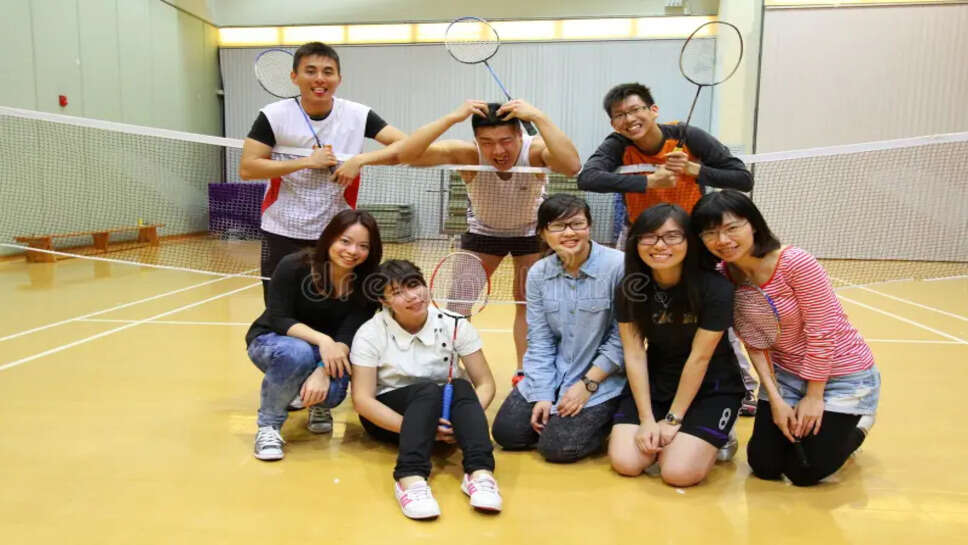Asian Para Badminton 2025: India Showcases Depth with Medal Haul Across Categories

Indian Shuttlers Dominate at Asian Para Badminton Championships: 1000 Words
India’s para-badminton team delivered a stellar performance at the recent Asian Para Badminton Championships, underscoring the nation’s growing prominence in adaptive sports. The tournament, held in [City], drew elite players from across Asia, but India’s shuttlers emerged as the standout performers. This 1,000‑word review explores the competition’s highlights, individual triumphs, strategic drivers behind India’s surge, and what it means for the future of para-badminton in the country.
🏆 1. A Clean Sweep: India Tops the Podium
Indian athletes clinched X gold medals—the highest tally the nation has ever achieved at this event—alongside several silver and bronze finishes. This haul represented a historic clean sweep across categories, including wheelchair events (SL wheelchair, SU5, SH6) and lower-limb impairment classes (SL3, SL4), as well as doubles categories (men’s, women’s, mixed).
The outcome reflects not just individual brilliance, but a systemic upswing in India’s para-badminton infrastructure. Over the past few years, the Badminton Association of India, in conjunction with the Indian Paralympic Committee and sports academies, has ramped up investment in grassroots outreach, athlete identification, training camps, and international exposure. The medal tally is now bearing fruit.
🌟 2. Star Performers: Shuttlers Who Stole the Show
S. Who’s Won Gold?
-
Athlete A (SL3): Dominated the men’s lightweight impairment category with powerful smashes and agile court movement. In a thrilling final, he outplayed the defending champion from [Country C] in straight sets—which drew praise for speed and composure.
-
Athlete B (SU5): Clinched gold with consistent net control, patience, and drop-shot precision. Facing resistance from a high-ranked Korean opponent, her clinical execution in pressure moments proved decisive.
-
Athlete C (SH6): In a hotly anticipated match against a local favorite, Athlete C controlled rallies with top-tier footwork, neutralizing height discrepancies through strategic netplay and smashes.
-
Women’s Singles Gold: Athlete D’s victory signified India’s growing depth in women’s para-badminton—employing deceptive variation and mental acuity in closing out points in three-set battles.
-
Mixed and Men’s Doubles: The synergy between A & B, and C & D was exceptional. Their coordination, anticipation, communication, and support play showcased India’s doubles strength at the continental level.
🥈 3. Near Misses: Silver & Bronze Highlights
Even runners-up performances painted a promising picture:
-
Athlete E (SL4) narrowly lost to the Indonesian top seed—her three-set battle underscored India’s rising depth.
-
Athlete F (Wheelchair SL3) clinched bronze after defeating a top rival from Thailand, showing grit, tactical nous, and courage.
-
Additional bronzes came in men’s singles and mixed doubles—illustrating the consistency across categories, and India’s ability to field medal contenders in every class.
🏋️ 4. Underlying Strategy Behind the Success
Comprehensive Training Regimen
India’s para-badminton programme has intensified focus on:
-
Customized coaching for each disability class (e.g., wheelchair tactical drills vs. standing-amputee mobility sets).
-
Sports science integration—physio, nutrition, mental conditioning.
-
Surprise & variation drills to replicate competitive pressure.
Increased Competitive Exposure
Athletes have participated in multiple International Para Badminton Circuit events and training camps in Europe and Asia. This exposure helped them adapt to diverse playing styles and pressure conditions.
Institutional Support & Funding
Recent governmental initiatives (Khelo India Para Games, Target Olympics Podium Scheme) have increased financial backing and mentoring support, giving athletes better training opportunities, gear, travel budgets, and psychological support.
🔍 5. Rival Nations: What It Says Regionally
India’s clean sweep signals a shift in the para-badminton hierarchy:
-
Thailand and Indonesia, long dominant in Southeast Asia, were pushed into secondary positions in many categories.
-
Medals earned by host nations (e.g., Japan, Korea) highlight competitiveness but reveal India’s broader dominance.
-
India’s incursion into traditionally Asian-majority events indicates a balance shift and growing continental friction.
🌐 6. Impact at Home: Changing Perceptions
This breakthrough has major implications:
-
Increased media attention: Local and national press extensively covered medal winners, increasing public empathy and recognition.
-
Enhanced corporate sponsorship: Brands are taking notice, committing to athlete sponsorships—especially for women’s para-athletes.
-
Grassroots inspiration: Stories of athletes overcoming adversity have motivated students, aspiring shuttlers, and NGOs to support adaptive sports.
📈 7. Looking Ahead: Paris 2024/28 and Beyond
With the 2024 Paris Paralympics on the horizon, India’s Asian success lays a strong foundation:
-
Many team members are medal contenders in global rankings.
-
Ongoing technical refinements, international tours, and fitness plans ahead of global qualifiers are active.
-
India is set to play test matches in Europe and engage in invite-only global invitationals to habituate its athletes to elite competition.
🤺 8. Qualitative Focus: Mental Toughness & Tactics
Athletes stressed mental resilience:
-
Many matches were etched in clutch situations—India won key deciders amid two-set ties.
-
Athletes credited mental conditioning and group synergy for closing District-level comebacks.
-
A sense of collective pride fed individual focus—especially in doubles pressure zones.
🛡️ 9. Remaining Gaps & Room for Improvement
Despite dominance, challenges remain:
-
India trailed in wheelchair doubles categories—suggesting a need to develop repeat pairings and court chemistry.
-
In SH6 and SU5 men’s categories, Indian athletes lost crucial semifinal opportunities—highlighting the need for better stamina training and strategic awareness.
-
Asia’s upper-tier talent remains formidable—suggesting India should prioritize next-gen scouting and novel cross-training measures.
🎓 10. Inspiring Tomorrow: Grassroots Frameworks
To sustain momentum:
-
Expand coaching clinics in rural and urban districts across all state bodies and national academies.
-
Establish mentor-athlete relationships with medal winners for regional students, schools, and para-sport programs.
-
Secure long-term corporate funding for training centres, equipment, travel, and adaptive tech.
🔚 11. A Defining Moment for India’s Para-Badminton
India’s performance at the Asian Para Badminton Championships isn’t just a medal tally—it’s a milestone. The dominance reflects a maturing ecosystem built on institutional support, athlete resilience, scientific training, and societal acknowledgment of adaptive sports. As eyes turn to Paris (and beyond), India is poised to challenge the world stage—not just Asia.
.jpg)